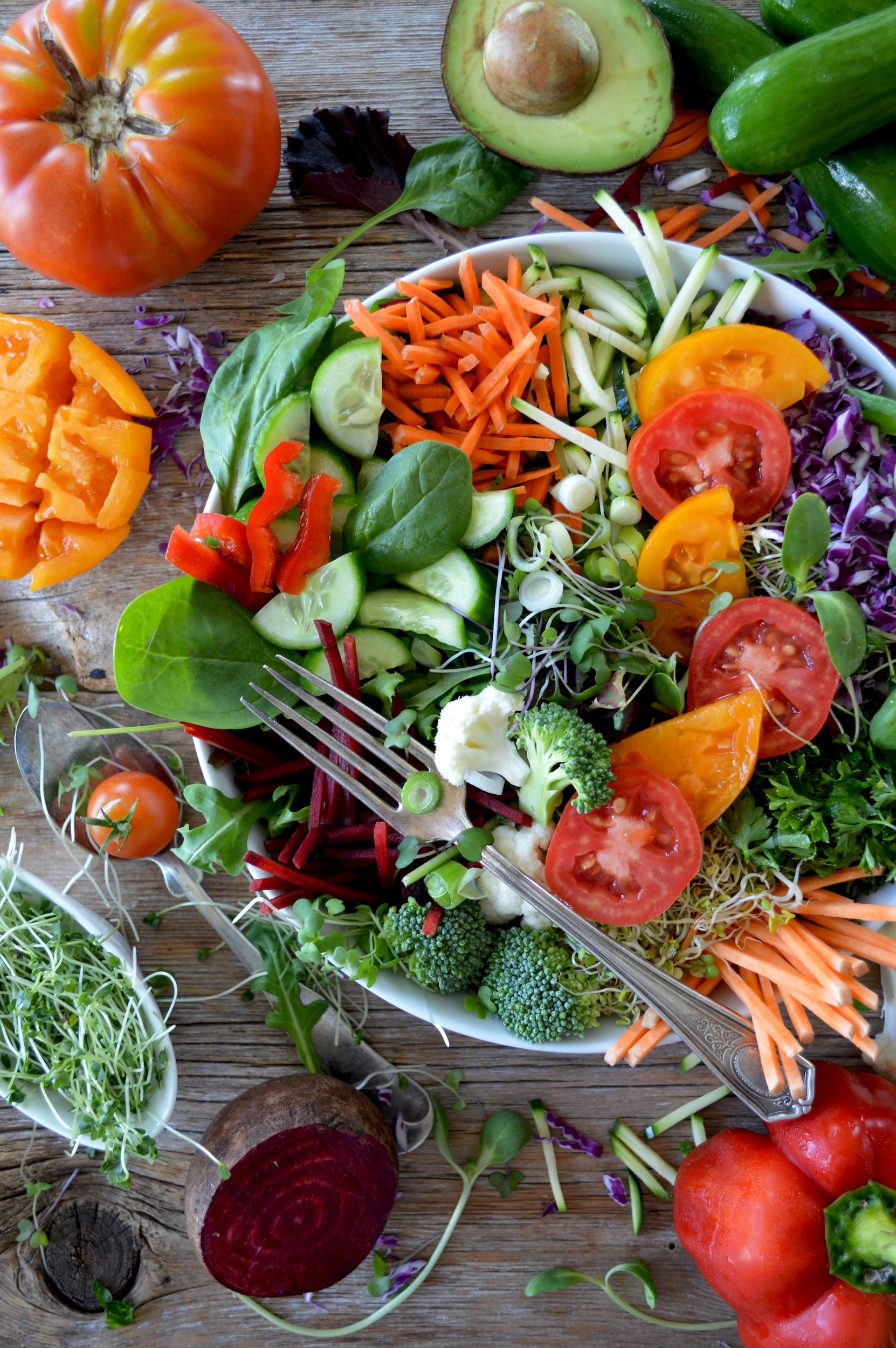3 Steps to healthy skin, from the inside out
I think we can all agree that our skin is important. It’s not only our largest organ, but it also performs important functions like turning sunlight into vitamin D, helping rid the body of toxins, and even plays a role in immunity. But, we might consider its most important role as part of the covering we show the world. For this reason, our skin impacts our identity and skin issues can be embarrassing.
If you’re reading this, you might already be struggling with skin conditions like eczema, acne, psoriasis, or rosacea, and already know what dermatologists have to offer. Let’s face it, antibiotics and steroids might help temporarily, but they don’t actually heal the skin or address the cause, so those skin symptoms keep coming back – and sometimes worse than ever.
In this article, I share tips you can use to begin to heal your skin from the inside out and restore your skin barrier, naturally! I discuss how to optimize your skin’s microbiome, natural cleansing and moisturizing options and how gut health affects your skin.
FROM THE OUTSIDE
Nourish your skin’s microbiome
Yep, the skin has its own unique microbiome that can become imbalanced from changes in pH, intense cleansing routines, stress and even nutritional imbalances. Like the gut microbiome, the skin is home to a complex community of microbes, including lipo-phyllic (oil-loving) bacteria, that help our skin to function well and look healthy. A balanced microbiome in the skin helps to keep certain opportunistic bacteria from taking over and causing infections, like acne, candida, tinea and others.
The skin is naturally acidic, and has a pH of about 4.5-5, this is the sweet spot, where the good microbes thrive. This is relatively acidic compared to soap which is more alkaline with a pH of about 9. When we use harsh, alkaline products on our skin over and over again, it impairs the good microbes from helping to balance our skin’s natural secretions, and even slows the skins ability to expel waste, and keep the bad microbes at bay. Soap also strips the natural oils from the skin - these natural oils help form a protective barrier and a role in feeding the good microbes and stimulates our skin to secrete more oil.
So, what can we do about it? Well, first let's talk about cleansing because many of us are harming our skin while we are cleansing. Throughout the day, our skin is in protection mode, sunlight, pollution and chemicals can all damage the skin, and then we come home and scrub it with harsh cleaners, and use potions and creams, all of which can disrupt the skin's pH and microbiome.
DO:
Clean your skin with yogurt I’m not kidding! Yogurt is not only soothing and the perfect pH for skin, it also contains living probiotic microbes. Try a natural, probiotic yogurt without sweeteners or flavors, gently massage into skin and leave on for a few minutes then rinse with tepid water and gently pat dry. If you have really oily skin or use make-up a double-cleanse may be necessary.
Manuka honey mask. Honey’s acidity improved the skin’s pH, and manuka honey can accelerate healing, reduce acne, inflammation. Apply a small amount to a dry, clean face and leave on for 10 minutes or so, then gently rinse with tepid water and pat dry, your skin will feel amazing! You can also use it as a spot treatment for pimples and wound healing.
Oil is another great option for cleansing and moisturizing, especially if you are prone to oily skin. This is because our sebaceous glands - the ones that secrete oil - adjust the amount of oil they secrete depending on the current state of skin. So if you are stripping your skin of oils, it is going to be ramping up oil secretion trying to find balance, a losing battle. Just take care to avoid alkaline oils like coconut which has a pH of about 8. Walnut oil or apricot kernal oil are better choices. You can also try adding a few drops of essential oil of lavender (Lavandula angustifolia) and/or essential oil of chamomile (Matricaria recutica) to help heal and calm inflamed or damaged skin.
Use natural fiber pillowcases, like silk, cotton or bamboo and change it weekly. If you have acne or another infection, change it every night.
Use natural beauty products that are chemical and alcohol free and have a pH between 4-6. Power Skin Solutions make beautiful skin care products for troubled skin, and they ship internationally. Use code HNH10 for 10% off your order.
DON’T
Don’t rub the skin or use harsh cleansers
Limit your use of soap on the body to the groin, armpits and hair. The rest of the body doesn't need cleaning with soap. For dandruff and psoriasis, consider purchasing probiotic shampoo and cleansers that won't further damage the skin.
2. FROM THE INSIDE
Heal the gut
They say the eyes are the windows to the soul, well, the skin is a window to the gut - so to speak. Digestive imbalances and poor skin health go hand in hand, and that can be true even if you don't have overt digestive symptoms like bloating, diarrhea, constipation or reflux.
Why? Well, our digestive health affects our skin in a few ways. For one thing, if we are not digesting properly, chances are nutrients are not being well absorbed, and nutrients including vitamins A, C, D, E, and B vitamins, iron, selenium, zinc and essential fatty acids are required for the skin to thrive.
Plus, many people skin conditions also have a damaged gut lining, which can lead to a hypersensitive immune response that in turn contributes to skin conditions. This is because when the cells that act as a barrier between our stomach contents and our bloodstream are damaged, proteins, undigested food and toxins can enter the bloodstream and stimulate an allergic response, which causes an inflammatory reaction that can over time, result in itchy, red, damaged skin like dermatitis, psoriasis, rosacea and others.
Healing the gut can be tricky, and treatment can vary depending on the cause of the gut damage in the first place. For example, food sensitivities, antibiotics, alcohol and stress are all common causes of poor gut health.
Here are a few places everyone can start:
Get an allergy test – get tested for celiac disease, wheat allergy, lactose intolerance, and other food allergies, and avoid any foods that you are reacting to while your gut heals.
Do the DUTCH test - This perfect for those with suspected hormonal acne and menstrual irregularities. The urine samples can be taken from home. More information on the DUTCH test here.
Nourish the gut – eat foods that help restore the gut lining, foods like turmeric, bone broth, slippery elm powder, aloe vera and Lacto-fermented foods like lime pickle, sauerkraut, kimchi, miso and kefir are important.
Include plenty of skin-supporting whole foods in the diet, including orange and green veggies, nuts and seeds, fatty fish and avocados. Not sure where to start? Book a nutrition assessment and receive meal plans and recipes made just for you.
Ease of the alcohol, sugar and wheat – these increase GI inflammation, disrupt the gut microbiome and damage the gut lining. Some may benefit from avoiding dairy as well, as it can stimulate mast cell and histamine activation even if they are not lactose intolerant.
3. ADDRESS THE CAUSE
This is arguably the most important step of all because one solution doesn't work for everyone. For example acne is caused by sex hormone imbalances, and for others, blood sugar dysregulation and diet might be the main drivers. For some, stress and cleansing routines could be the main culprits. This is why understanding YOUR root cause is so important if you want to really heal.
So how do you figure out what is causing your skin condition? At my clinic, we do a thorough health history, analyze routine blood work and sometimes do functional testing, like stool or urine tests that identify gut and hormonal imbalances if necessary.
If you are not in a position to see a professional, you can start here:
1. Follow my tips to nourish your skin microbiome and heal the gut, this is a great place to start seeing results.
2. Keep a food and symptom journal to begin to identify any food intolerances, and understand that reactions to food can be immediate or take up to 3-4 days, depending on the type of immune reaction. You can also do an elimination diet to uncover food intolerances, you can learn more about that here.
3. If you are menstruating, notice if your symptoms are worse during certain phases of your menstrual cycle, or have been worse since coming off the pill, it is likely hormones are playing a role. If that’s the case, the DUTCH test can be really helpful in identifying which hormones are out of balance.
Remember, one-on-one professional guidance is just a click away, book your free discovery call here.
Yours in health,
Camille Hoffman
Naturopath, Nutritionist & Medical Herbalist
BOOK YOUR FREE DISCOVERY CALL HERE
The views and nutrition, naturopathic and herbal recommendations expressed by Camille Hoffman and Hoffman Natural Health’s programs, website, publications and newsletters, do not constitute a practitioner-patient relationship, are not intended to be a substitute for conventional medical service and are for informational purposes only. The statements and content found in these programs, website, publications and newsletters have not been evaluated by the Food and Drug Administration. The treatments described may have known and unknown side effects and health hazards. Each user is solely responsible for their own healthcare choices and decisions. Camille Hoffman advises the website user to discuss these ideas with a healthcare professional or physician before trying them. Camille Hoffman does not accept any responsibility for any positive or adverse effects a person claims to experience, directly or indirectly, from the ideas and contents of this website.
SOURCES
Patel, S., Cichello, S. Manuka honey: an emerging natural food with medicinal use. Nat. Prod. Bioprospect. 3, 121–128 (2013). https://doi.org/10.1007/s13659-013-0018-7
Lee, S., Heo, Y., & Kim, Y. (2010). Effect of German chamomile oil application on alleviating atopic dermatitis-like immune alterations in mice. Journal of Veterinary Science, 11(1), 35-41. doi:https://doi.org/10.4142/jvs.2010.11.1.35
Orchard, A., & van Vuuren, S. (2017). Commercial essential oils as potential antimicrobials to treat skin diseases. Evidence-Based Complementary and Alternative Medicine, 2017(4517971). doi:https://doi.org/10.1155/2017/4517971
Valdman-Grinshpoun, Y., Ben-Amitai, D., & Zvulunov, A. (2012). Barrier-restoring therapies in atopic dermatitis: current approaches and future perspectives. Dermatology research and practice, 2012(923134). doi:https://doi.org/10.1155/2012/923134




